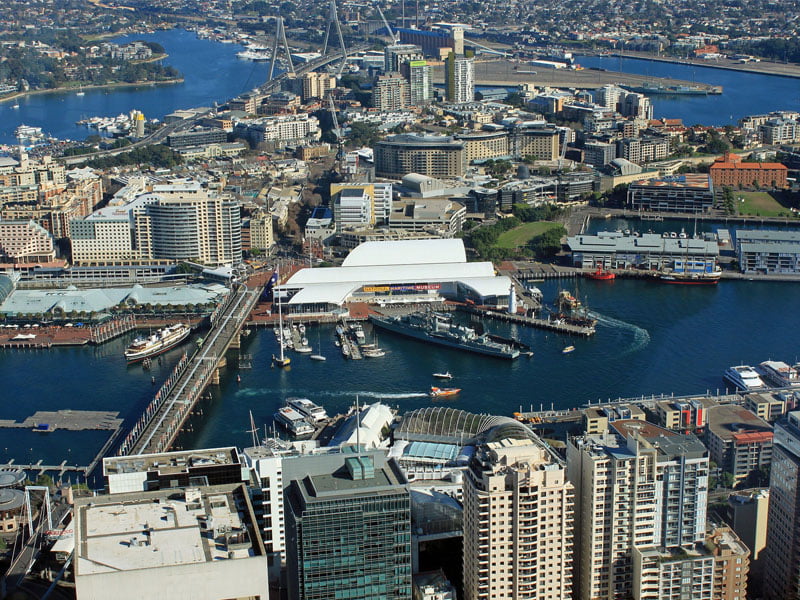Malcolm Turnbull’s multi-technology mix National Broadband Network (NBN) was comprehensively undermined last week when BT’s Openreach CEO Clive Selley indicated that 10 million UK premises could have Fibre to the Premise (FTTP) by the mid-2020s.
While he was Minister for Communications, Mr Turnbull spruiked how the BT Openreach broadband network was the best approach for Australia, and that building a FTTP NBN was a waste of taxpayer funds, even if NBN Co was forced to pay back the debt over coming decades.
By the mid-2000s Australia was faced with the incumbent telco, Telstra, that saw no strategic benefit to upgrading the ADSL network and providing its competitors with “a free ride”.

Around the same time, the UK regulator Ofcom was having discussions with BT about how it would provide its competitors with wholesale access to its broadband network. The discussions led to an undertaking by BT that it would structurally separate into BT (retail) and Openreach (wholesale).
In Australia, the Labor government, like governments before it, failed to convince Telstra to structurally separate and by 2008 had given up trying.
The next step should have been to force Telstra to split into two companies, as happened in New Zealand in 2012 when Telecom New Zealand was split into two companies, Spark (retail) and Chorus (wholesale).
In a move that is yet to be corrected, the government created NBN Co in 2009 and tasked it to build the NBN with FTTP to 93 per cent of premises. This decision left Telstra in a dominant position in the market and NBN Co’s business model is critically undermined by the initial and ongoing payments to Telstra.
In 2017, BT Group, the owner of BT (retail) and Openreach (wholesale) agreed to the UK regulator Ofcom’s demand that Openreach was to become a separate company with its own Board and staff.
Why did this happen? The reason was that the telecommunications industry argued successfully that Openreach was unacceptably influenced by management decisions that were perceived to benefit BT before the rest of the industry.
As a result, BT and Openreach are now effectively two separate companies owned by the umbrella company BT Group, and the Openreach Board and CEO are free to develop and pursue a business model that will optimize its wholesale offering.
Continued pressure from the telecommunications industry means that it is only a matter of time before BT Group is dissolved, leading to BT and Openreach becoming fully independent listed companies, similar to Spark and Chorus in New Zealand.
Before we discuss how this affects Australia, let us revisit what has happened with the broadband network in the UK.
Between 2005 and 2010, BT spent about $20 billion on the 21st Century Network project that upgraded the core network and subsequently led to the commencement of an approximately $15 billion FTTN/VDSL2 rollout around 2010 that lasted until late 2014.
UK broadband consumers, confronted with FTTN/VDSL2, voiced their complaints loudly, saying Openreach was dragging its feet on providing the 21st Century Network. As a result the company is now rolling out FTTP.
On 18 July, the Openreach CEO Clive Selley committed the company to connecting 10 million UK premises to FTTP by the mid-2020s if “the right conditions” prevail. BT Group owns the largest UK FTTP network but at 330,000 premises it is minuscule compared to its copper-based infrastructure, and to the FTTP already rolled out in Australia.
Mr Selley, was undoubtedly highlighting the need for further funding to be found as he also said that there is “widespread demand” for FTTP.
“Full fibre broadband is faster, more reliable and simpler to maintain, and it has the potential to power the UK’s economic success for a century.
Openreach has committed to connecting two million premises to FTTP by 2020, and 10 million premises will get their FTTN/VDSL2 upgraded to Fibre to the Curb (FTTC) /G.Fast technology.
NBN Co has made a lot of noise about G.Fast recently too, but it has no plans to rollout G.Fast to replace the FTTN/VDSL2 being used to connect 60 per cent of premises to the NBN until after 2021.
And FTTC means premises should receive connection speeds of up to 200 Mbps (350m of copper) and up to 1 Gbps (80m of copper).
Meanwhile, by the mid-2020s, Australian homes with FTTP will be able to enjoy reliable, low latency 10 or 40 Gbps connections.
Mr Selley has clearly set out the future direction for Openreach when he said that 10 million UK premises could have Fibre to the Premises (FTTP) by the mid-2020s.
“We’re determined to continue our investment in the infrastructure Britain needs to support our thriving digital economy and we want to build a much larger full fibre network, so we need to work closely with communications providers, government and Ofcom to achieve that.
“By using new techniques, we recently halved the cost of delivering ‘full fibre’ infrastructure, but building a large-scale network is still a huge commercial, technical and logistical challenge that’s going to need real ingenuity, flexibility and coordination across government and industry.
“With the right conditions, we believe we could make FTTP available to as many as 10 million homes and businesses by the mid-2020s, but we need to understand if there’s sufficient demand to justify the roll-out, and support for the enablers needed to build a viable business case.”
In the UK, BT Group has been drip fed public funding for network upgrades over the past 15 years. Mr Selley is clearly highlighting the need for funding to be found and as a private company it will need to build the business case now that Openreach is able to operate independently as a wholesale broadband provider.
In Australia, due to Mr Turnbull’s flawed decision to move to a multi-technology mix, the final cost of moving from ADSL to FTTP will be $30 billion to $50 billion more than what was needed to go from ADSL to FTTP, and Australia is unlikely to have an all fibre NBN until 2030 at the earliest.
In addition to this, NBN Co will be forced to continue making annual payments to Telstra of over $1 billion to pay for infrastructure that it leases, making the NBN one of the most expensive broadband networks in the world.
By 2025, Mr Turnbull will have no more than 2 million premises connected using FTTP. It is very likely that most of the 5 million premises NBN Co is connecting to the NBN with FTTN/VDSL2 before 2021 will still be connected to the NBN with FTTN/VDSL2 in 2025.
In Australia, the Rudd government made a decision in 2009 to commit the funding needed to move from ADSL directly to FTTP by 2020.
Australian experts at the time supported this decision and indicated there was agreement that about $45 billion should be sufficient for the FTTP rollout to be completed by 2020.
In New Zealand, Chorus is connecting 70 per cent of premises using FTTP and the cost of connecting premises using FTTP has fallen by about 44 per cent over the past three years to about $2800. The New Zealand government is loaning Chorus $1680 per premises with the rest is being funded through commercial loans. The time taken to connect premises with FTTP has also fallen significantly as new optical technologies have become available.
The government and NBN Co staunchly refuse to acknowledge that the Australian experts who stated that the cost of FTTP would fall by 40-50 per cent as the FTTP rollout proceeded and that the time taken to connect premises to FTTP would significantly fall were right.
Why is this?
Mr Turnbull is responsible for the biggest government infrastructure blunder in Australian history, one that will cost more than $30 billion to fix and put Australia more than a decade behind our competitors in the global digital economy. The evidence is clear.
Mark Gregory is an Associate Professor in the School of Engineering at RMIT University and Managing Editor of the Australian Journal of Telecommunications and the Digital Economy
Do you know more? Contact James Riley via Email.

